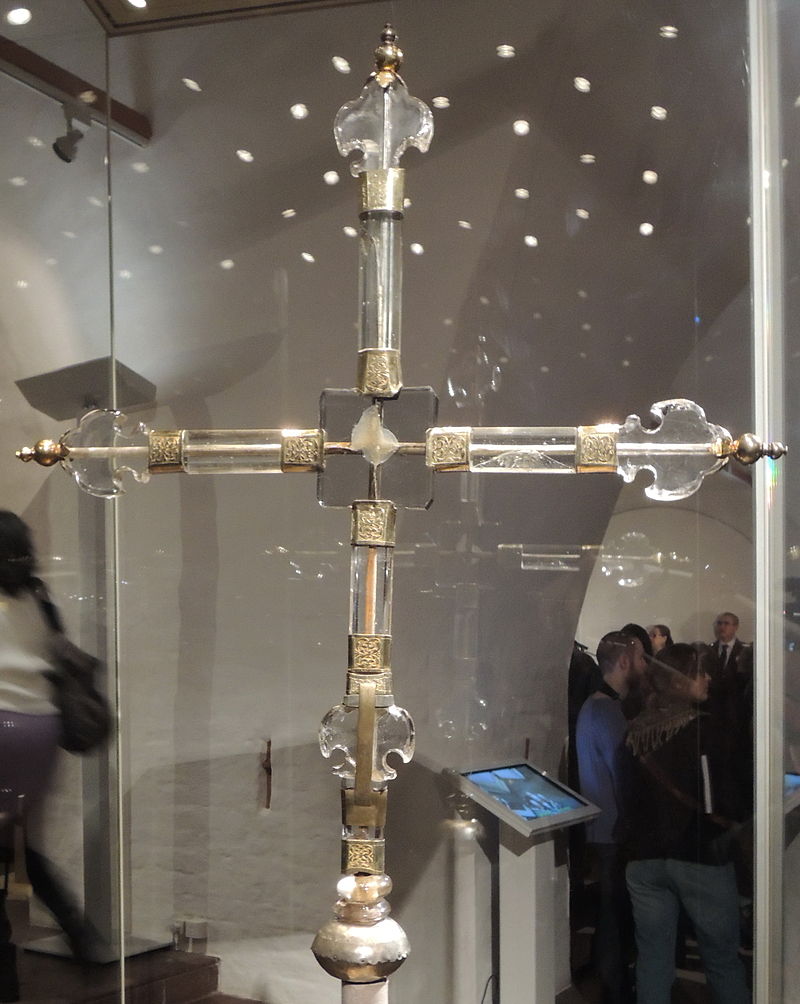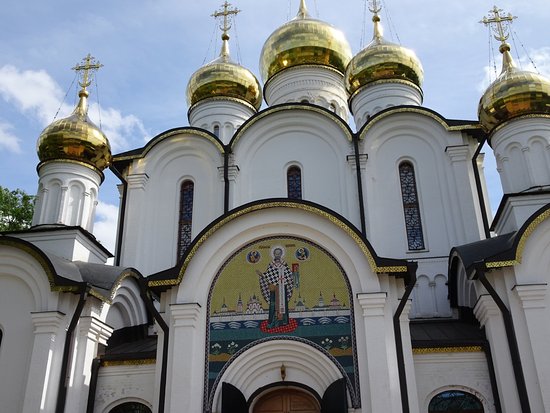There is a legend telling that ten crosses containing particles of the relics of the holy saints were brought from Korsun (now Kherson) to Kiev by the Holy Equal-to-the-Apostles Prince Vladimir. They received their name from the name of the city in which they were before arriving in the capital of ancient Russia. Their origin dates back to the 10th century. Several shrines have survived to our time. What is the Korsun cross? The article provides information about the shrine.
Description
Korsunsky cross - this is the Russian name for the relic, which is a 4-pointed symbol belonging to the ancient Byzantine type of altar and procession crosses. At the ends of the figure through the jumpers are attached discs decorated with embossed depicting the faces of the saints. The most striking examples of such crosses are figures that were installed in the altars of the churches of Armenia, Georgia, Syria, as well as on Mount Athos in the altars of the early Middle Ages.
On the Origin of the Korsun Cross
The origin of remote and altar shrines that have reached our contemporaries truly resembles a legend. The history of the Korsunsky cross belongs to very ancient pre-martial times. She is associated with a vision that before the victorious Battle of Milbia miraculously appeared in the sky to Emperor Constantine. According to ancient authors, a gilded cross with round balls at the ends, created on the model of a vision that appeared to the emperor, was installed at the Forum in Constantinople. Since then, it is known that preciously decorated shrines, which are a dual symbol (symbolizing both the sacrifice of Christ and His triumph, the victory over death and hell, which opens the door to salvation for humanity), were usually placed behind the altar in the altar. The roots of the symbol name are purely Slavic. The shrine is so called because the first crosses of a similar pattern were brought from Byzantium to Russian churches through the city of Korsun (Khersones).
About samples that have reached us
Three altarpieces are called Korsun crosses, installed on the altar of the Assumption Cathedral in Moscow. One of them, four-pointed, is upholstered with silver gilded sheets; the front side is decorated with gems and hallmarks with the faces of saints. In the middle and around the edges are images of the Crucifixion, Deesis, Annunciation and Resurrection. The reverse side is decorated with crystal stars, in the middle and at the ends there are hallmarks with chased images of saints. The other two four-pointed crosses (remote) are also made of rock crystal. The figures are fastened with silver and approved on the poles.

As experts who are closest to the Korsunsky cross, they mention some of the extant altar symbols - a silver rarity from the Lavra - the cross of St. Athanasius on Mount Athos (XI century), about a copper cross from Novgorod, the hammered salary of which is decorated with imitation of precious stones (XI-XII centuries). Both symbols are distinguished by the presence of expanding ends and medallions with images of selected saints and the face of Deesis.
Two Novgorod relics of the eleventh to twelfth centuries also differ in many similarities with the shape of the Korsunsky cross: one of the symbols is in the basmen setting, the Crucifix is placed in the central medallion, the other in the silver basmen setting, on both sides are the images of the Crucifix, on the back are the faces of the elect saints and the Holy Savior.
Another great shrine, almost identical to the Moscow relic, in the second half of the XVII century. was delivered from the Church of the Nativity of the Virgin (Suzdal) to the Nikolsky Monastery (Pereslavl-Zalessky).
History of Pereslavl-Zalessky relics
Until recently, one of the rarest examples of Russian decorative and applied art was kept in the funds of the art and historical-architectural museum-reserve of Pereslavl Zalessky. This is the altar Korsun cross, which was previously in the Cathedral of St. Nicholas Nikolsky Monastery. According to some reports, in the seventeenth century the shrine was delivered to the Nikolsky monastery by schismatics from Suzdal as a payment for their accommodation. It is known that in the twenties of the last century the monastery ceased to exist. In the funds of the museum Pereslavl Zalessky Korsun cross came in 1923. At that time, the theory was born among local historians and religious leaders that this relic is one of the oldest shrines of the Rostov-Yaroslavl diocese of the first century after the baptism of Russia.

During cataloging, this artifact was recorded as "Korsunsky cross of oak, four-pointed, Byzantine form 16-17 centuries." From 1923 to 1926 the relic was exhibited in the department of “church antiquities” of the museum. It is known that in August 1998, Patriarch Alexy II prayed in front of the Korsun cross in Pereslavl Zalessky. On June 12, 2009, the relic was placed in the glass casket of the Nikolsky Monastery (under the responsibility of the museum). The ceremonial transfer of the Korsun Cross to the Nicholas Monastery from the Historical Museum took place in the summer of 2010. Since then, the shrine has been kept there.
Korsunsky cross from St. Nicholas Monastery (Pereslavl Zalessky): description
This artifact is a cross-reliquary, 248 cm high, 135 cm wide. Presumably, it was made in the Rostov Metropolis in the sixteenth or seventeenth century.
The double-sided four-pointed wooden symbol is gilded and lined with copper. The cross is decorated with silver arkans — in which the relics of the Apostle Paul, the martyr Victor, the martyr Dimitry of Solunsky, the great martyr George the Victorious, John the Baptist, fragments of the tomb of John the Theologian are preserved. The shrine is decorated with small crosses made of semiprecious stones: lapis lazuli and jasper; pearls unify the front side. The surface of the arkans is decorated with artfully engraved faces of saints and images of holidays.
What relics of saints are stored in the cross (on the obverse)?
The upper branch contains: Ascension token, as well as fragments of the relics of the Holy Prophet and Baptist of the Lord John the Baptist, Holy Martyr Basil, presbyter of Ankir. At the middle cross there is a shotgun with the Calvary Cross overlay. The lower branch of the relic contains particles of the relics of the holy martyrs and soldiers of Theodore Tiron, Victor, Theodore Stratilat, blessed Prince Theodore of Smolensk and his children Konstantin and David, the descendant of Descent into Hell. On the left branch are presented: particles of the relics of the Holy Great Martyr Dmitry Solunsky, as well as manna from the grave of the Evangelist and Apostle John the Theologian. On the right branch are stored: fragments of the relics of the holy right-wing Apostle Paul, St. Great Martyr George the Victorious. Here you can see the shotgun "Position in the coffin."
On the back of the cross
The content of the upper branch (on the back): particles of the relics of the holy martyr Basil (Amasian presbyter), soldiers and holy martyrs Agathonikos of Nicomedia, Mercury. Here you can see the Annunciation token. The middle cross represents the resurrection token. The lower branch is represented by fragments of the relics of Saints Ignatius and Isaiah of Rostov, the blessed prince Vasily Yaroslavsky, and the Sreteniy fraction. The right branch stores the entrance to Jerusalem, the fragments of the relics of the holy great martyrs Christina, Eustratius. The left branch of the cross (the reverse side) contains the Dormition token and fragments of the relics of the holy martyr and warrior Orestes, as well as the holy martyr Marina.